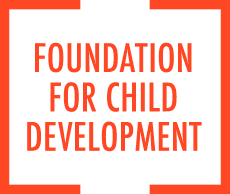https://www.fcd-us.org/presidential-perspective-back-to-school/
The beginning of the school year is a good time to reflect on how we think about educational challenges in America. What we think shapes what we identify as solutions. Educational policies and institutions are socially constructed and tied to historical circumstances. They can - and should - adapt to changing conditions.
Take, for example, the idea of narrowing the achievement gap. This focuses on closing the troubling gap between groups of students, related to family economic resources and race/ethnicity. These gaps draw on data from state tests and the nation’s report card, the National Assessment of Education Progress (NAEP). The 2005 NAEP results show that only forty percent of White and Asian Fourth Graders demonstrate proficiency in reading, and only about fifteen percent of Black, Hispanic, and low-income fourth graders of all ethnicities demonstrate proficiency in reading.
Rarely do we consider whether the achievement levels used in these gap analyses represent levels of performance that American children should attain to live a good life. Often these levels are set far too low, especially those based on state-set standards and tests.
Instead of focusing on the achievement gap, we should aim, as some governors are already doing, to close the competitiveness gap, so all American students will measure up to their peers in competitor nations. Globalization requires national, if not international standards.
As another example, consider school readiness. With its origins in the Goals 2000 initiative, the aim is to invest wisely in the first five years of life so that children will be healthy and eager to learn when they enter the K-12 educational system.
While school readiness is a desirable goal, what happens to children once they enter Kindergarten and beyond, especially if their early experiences are not valued as building blocks for future learning? It is time to broaden our vision from school readiness at the beginning of Kindergarten to strong achievement by the end of the Third Grade and well beyond.
Children who lag behind in Third Grade will find it increasingly difficult to catch up. Focusing on children’s achievement at Third Grade moves us not only to value the benefits of PK, but also to connect PK with Kindergarten through Third Grade to ensure that by the end of that grade, children are fully prepared for the rest of their schooling.
FCD’s PK-3 (Integrating PK with K-3 Education) Initiative - Success by Third - offers a way to think about early education that connects children’s experiences from PK and early childhood programs with early elementary education. This is an effort to create a coherent continuum of learning experiences across two currently separate educational experiences. These experiences result from different funding sources and different regulations associated with different administrative and historical circumstances.
A PK-3 approach is not only an effective way of educating children from age three to eight, it also is efficient. By closely aligning standards, curriculum and instruction, and assessments from PK to Third Grade, and by providing time for regular planning of efforts by their teachers across these grades, we ensure that each year of a child’s education builds on what comes before it.
I see growing support for a PK-3 approach with flexibility in implementation that is adapted to local conditions. Transforming that support into what happens in schools and classrooms, as well as creating a national PK-3 movement, remain before us.
As 55 million American children return to school this fall, we adults should go back to school, and reexamine whether our most cherished notions of what is best for children are serving them well, today and for the future. How we frame their opportunities for learning from birth through adulthood will have concrete consequences for their lives. Our future as a democracy hangs on how we think about educational challenges at the beginning of the 21st Century, and what we do about them.
Past President Ruby Takanishi
President
Foundation for Child Development
